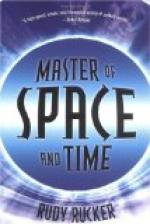On the tenth day of March, 1876, the telephone art was born, when, over a wire extending between two rooms on the top floor of a building in Boston, Alexander Graham Bell spoke to his associate, Thomas A. Watson, saying: “Mr. Watson, please come here. I want you.” These words, then heard by Mr. Watson in the instrument at his ear, constitute the first sentence ever received by the electric telephone. The instrument into which Doctor Bell spoke was a crude apparatus, and the current which it generated was so feeble that, although the line was about a hundred feet in length, the voice heard in the receiver was so faint as to be audible only to such a trained and sensitive ear as that of the young Mr. Watson, and then only when all surrounding noises were excluded.
Following the instructions given by Doctor Bell, Mr. Watson with his own hands had constructed the first telephone instruments and ran the first telephone wire. At that time all the knowledge of the telephone art was possessed exclusively by those two men. There was no experience to guide and no tradition to follow. The founders of the telephone, with remarkable foresight, recognized that success depended upon the highest scientific knowledge and technical skill, and at once organized an experimental and research department. They also sought the aid of university professors eminent for their scientific attainments, although at that time there was no university giving the degree of Electrical Engineer or teaching electrical engineering.
From this small beginning there has been developed the present engineering, experimental and research department which is under my charge. From only two men in 1876 this staff has, in 1915, grown to more than six hundred engineers and scientists, including former professors, post-graduate students, and scientific investigators, graduates of nearly a hundred American colleges and universities, thus emphasizing in a special way the American character of the art. The above number includes only those devoted to experimental and research work and engineering development and standardization, and does not include the very much larger body of engineers engaged in manufacturing and in practical field work throughout the United States. Not even the largest and most powerful government telephone and telegraph administration of Europe has a staff to be compared with this. It is in our great universities that anything like it is to be found, but even here we find that it exceeds in number the entire teaching staff of even our largest technical institutions.
A good idea may spring up in the mind of man anywhere, but as applied to such a complex entity as a telephone system, the countless parts of which cover a continent, no individual unaided can bring the idea to a successful conclusion. A comprehensive and effective engineering and scientific and development organization such as this is necessary, and years of expensive work are required before the idea can be rendered useful to the public.




